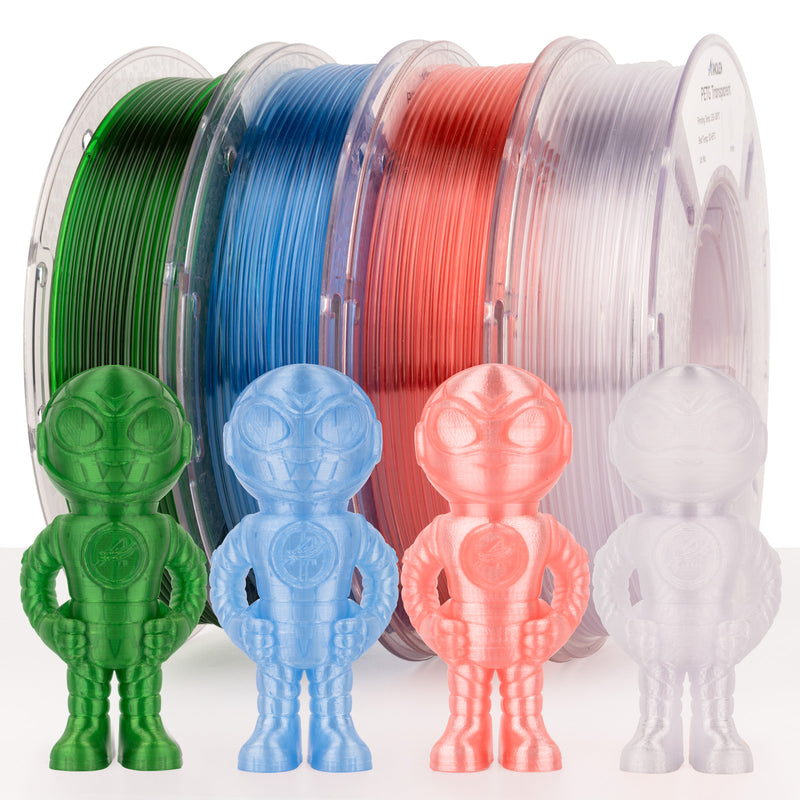Unleash Your 3D Printing Potential: Discover the Magic of PETG Filament!
3D printing has revolutionized the way we create and manufacture objects, allowing for remarkable customization and innovation. One of the most crucial aspects of successful 3D printing lies in the selection of the right filament. Among the myriad of options available, PETG filament has gained immense popularity in the 3D printing community. Known for its unique properties and versatility, PETG serves as an excellent choice for both beginners and experienced makers. This article will delve into the fascinating world of PETG filament, examining its properties, advantages, and various applications that can unleash your 3D printing potential.

Understanding PETG Filament Properties
PETG, short for Polyethylene Terephthalate Glycol, is a thermoplastic polyester that combines the best characteristics of both PET and glycol modification. This chemical composition results in a filament that is not only strong but also flexible. The addition of glycol reduces the brittleness commonly associated with PET, making PETG more adaptable to various printing conditions. In terms of physical properties, PETG boasts a high tensile strength and impact resistance, which means that objects printed with this filament can withstand significant stress without fracturing. Additionally, PETG has a low shrinkage rate, which minimizes warping and ensures that prints maintain their intended dimensions. This makes it an excellent choice for intricate designs and larger prints that require precision. Furthermore, PETG exhibits good clarity and gloss, allowing for aesthetically pleasing finishes that can enhance the visual appeal of printed items.
Advantages of Using PETG Filament
One of the standout benefits of using PETG filament is its remarkable durability. Unlike other filaments that may be prone to breakage, PETG is designed to endure wear and tear, making it perfect for functional parts that require longevity. Additionally, PETG is known for its flexibility, which allows for the creation of designs that can bend without breaking. This characteristic is particularly useful for items such as phone cases or custom-fit components. Another advantage is the ease of printing associated with PETG. It adheres well to the print bed, reducing the risk of prints lifting or failing mid-process. Moreover, PETG is resistant to moisture, making it suitable for outdoor applications or items that may be exposed to humidity. Its resistance to UV light also ensures that prints maintain their quality over time. These properties make PETG an excellent option for both novice and experienced 3D printing enthusiasts looking for reliability in their projects.
Applications of PETG Filament in 3D Printing
PETG filament excels in a variety of applications, showcasing its versatility and functionality. One of the primary uses of PETG is in the creation of prototypes. Designers and engineers appreciate its ability to produce durable models that can withstand testing without easily breaking. Additionally, PETG is ideal for functional parts, such as mechanical components or housings for electronics. A friend of mine recently used PETG to print a custom drone frame, and the results were impressive—sturdy yet lightweight, it held up perfectly during flight tests. Furthermore, PETG's aesthetic qualities lend themselves well to decorative items or products that require a polished appearance. Whether it's vases, figurines, or custom packaging, the clarity and gloss of PETG can elevate the overall look of a project. Its adaptability makes it a favorite among hobbyists and professionals alike who are looking to implement durable and visually appealing designs.
Comparison with Other Filament Types
When considering filament types, it's essential to compare PETG with other popular choices like PLA and ABS. PLA, while easy to print and biodegradable, lacks the durability and heat resistance of PETG. On the other hand, ABS offers superior strength but can be more challenging to print due to warping and odors. PETG finds a sweet spot between these materials, providing excellent durability and flexibility without the printing difficulties of ABS. For projects that demand both aesthetic quality and functional strength, PETG often becomes the preferred choice over PLA and ABS, especially when the end use involves exposure to stress or environmental elements.
Maximizing 3D Printing with PETG Filament
In conclusion, PETG filament stands out as a versatile and reliable option for 3D printing enthusiasts. With its robust properties, including durability, flexibility, and ease of printing, PETG proves to be an excellent choice for a range of applications—from prototypes and functional parts to visually appealing designs. By understanding the advantages of PETG and exploring its potential, you can elevate your 3D printing projects to new heights. Whether you're a beginner eager to experiment or a seasoned maker looking for a dependable filament, PETG is undoubtedly worth considering for your next project.



